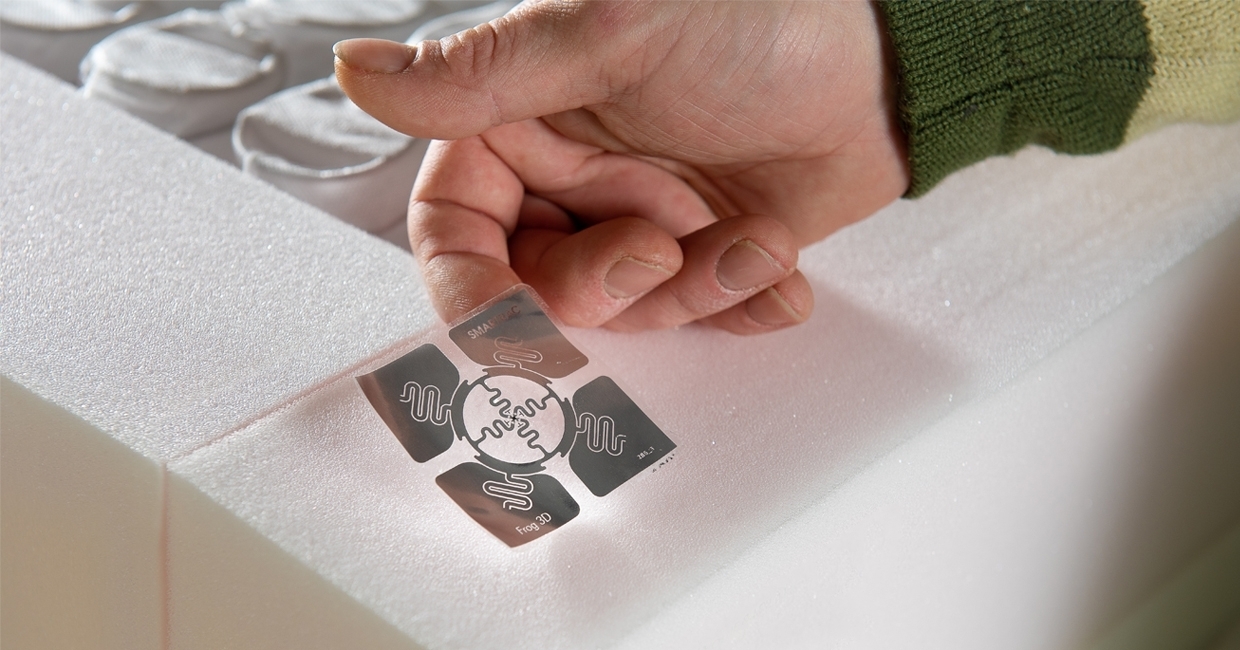The use of Radio Frequency Identification (RFID) tags in mattresses is transforming customer service in the bed industry, thanks to Breasley’s pioneering work.
The East Midlands-based company believes it was the first UK bedmaker to trace its mattresses from production line to bedroom in this way, having introduced the technology more than 10 years ago.
Joint MD Mike Crowshaw says: “We had the initial idea in 2008 from a marketing email trying to sell systems for asset tracking on production lines. The following year we took delivery of our first printer and batch of labels. Since then we have developed our own systems to communicate with RFID readers and writers, and as technology has moved on, we have tweaked and improved our use of the system to be more efficient.”
Breasley’s version of RFID tags works on ‘passive’ ultra-high frequency (UHF). This means the tags have no battery and rely on power from a reader to generate a magnetic field around an internal coiled antenna to power its circuit.
Mike explains: “The data encoded within the tag’s memory is then read or written. In our case, this data is a unique serial number which is also printed on our barcodes. RFID tags allow us to identify each mattress uniquely and quickly without having to worry about adhesive product labels falling off or becoming damaged. It also means we can identify every return, even if the packaging or external labelling is removed. This helps to speed up customer response times considerably.
“It’s particularly useful for white-label customers who source their mattresses from multiple manufacturers – we can identify any warranty claims specific to Breasley. We are pleased to say these remain well below 1% of our total output.”
Innovation is second nature to this family-run firm, which was also one of the first in the UK to move into the rolled-and-boxed mattress market. Today, more manufacturers in the sector are taking up its RFID approach.
“RFID technology is becoming cheaper and more readily available every year,” says Mike. “Smartphones are now able to read less sophisticated tags than ours, and it won’t be long before they can read UHF. This could potentially help us identity a Breasley mattress from a customer’s address using a smartphone. From the serial number we can tell exactly when, where and how the mattress was built. It can also assist with guarantee registration and end-of-life mattress recycling, making it easier for recyclers to identify exactly what materials are coming in for processing.”
As well as helping production by enabling its Material Requirements Planning (MRP) system communicate with RFID readers and writers, Breasley has also seen the technology benefit its marketing activities.
“Most customers, including retailers, like the idea, and it has been used effectively as a selling tool,” says Mike. “Full traceability from raw materials to delivered item is a powerful benefit for everyone in the supply chain – it gives peace of mind and reassurance.”
Breasley now uses RFID tags on all its products as standard, including its flagship Salus range and its rolled-and-boxed Uno collection.








